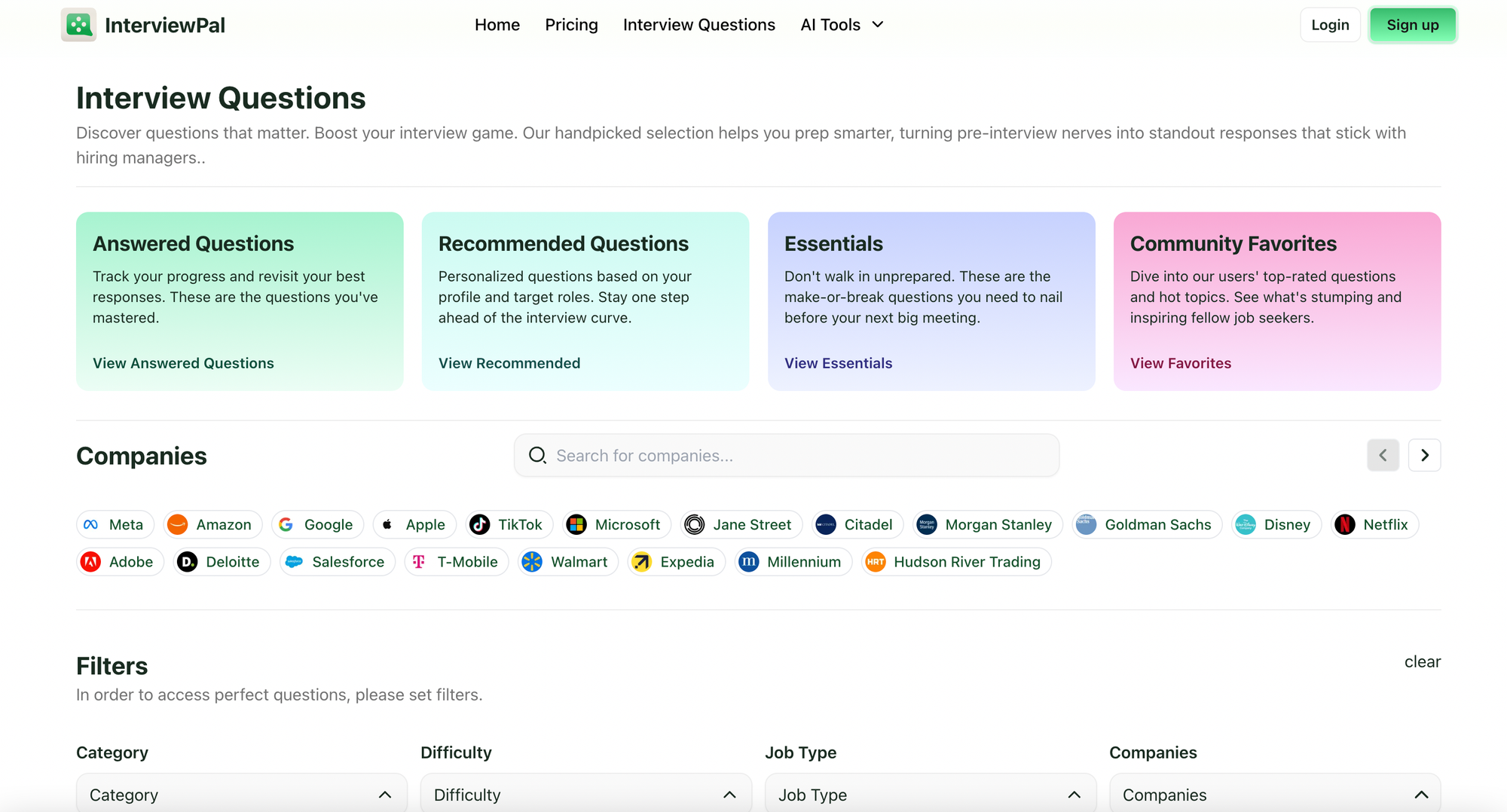If you're preparing for a software engineering interview at Etsy, you might be wondering what the process looks like and how to stand out. The interview process at Etsy is thorough, and it’s important to approach each stage with the right mindset. Here’s a breakdown of what you can expect at each step, based on Etsy’s typical hiring procedure.

Explore real Etsy interview questions sourced from recruiter, employers and candidates.
1. Recruiter or Hiring Manager Screening Call
The first step in Etsy’s interview process is a screening call with either a recruiter or the hiring manager. If your resume has made the cut, you’ll be contacted to verify key details about your experience and skills. This is also when Etsy assesses cultural fit, so be prepared for behavioral questions like, “Why do you want to work at Etsy?” and “Tell me about a time you faced a challenge at work.”
This initial screening usually lasts around 30 minutes. Sometimes, the hiring manager might join the call to answer any questions you have about the role or the company, and they might touch on a few technical and behavioral topics to get a sense of your problem-solving approach.
2. Technical Phone Interview
If you pass the recruiter’s call, you’ll move on to the technical phone interview. This round typically lasts an hour and is conducted virtually, with screen sharing to walk through coding problems. During this stage, you’ll be tested on algorithmic problems—expect to work with arrays, strings, or basic front-end tasks. You might also be asked to debug a sample Flask application or perform operations on data structures like linked lists or priority queues.
To succeed here, make sure you’re comfortable coding in languages like Python or JavaScript, as those are commonly used at Etsy. It’s also important to be clear and concise when explaining your thought process as you work through the problems.
3. Onsite Interview Rounds
After passing the technical phone interview, you’ll move on to the onsite interview, which is typically a 4-5 hour loop. During this time, you’ll participate in several rounds with different interviewers, each focusing on various aspects of your skill set.
- Coding Interview: Expect hands-on coding tasks that assess your knowledge of algorithms and data structures. You’ll be asked to solve problems on a shared platform.
- System Design Interview: Here, you’ll design scalable, efficient systems. You might be asked to tackle scenarios like creating a robust application architecture or designing a large-scale service.
- Pair Programming: You’ll collaborate on a coding task with the interviewer. This session is designed to see how well you communicate and work through problems with others. The interviewer might start with a simple problem and increase its complexity as you work through it.
- Behavioral Questions: In these rounds, you’ll discuss past projects and how you’ve handled various situations like conflicts, team dynamics, and project management challenges.
In addition to these rounds, you may also encounter specific application-based questions—such as reviewing the Etsy mobile app or suggesting system improvements. Be prepared to discuss your problem-solving methods and provide feedback on real-world challenges.
At InterviewPal, we've analyzed hundreds of Etsy interviews to identify the most common interview questions asked at Etsy and what makes answers stand out. Let's dive into structured answers that have helped engineering candidates at Etsy succeed.
1. Share a critical production issue you handled.
"During Black Friday period, the recommendation engine of an e-commerce startup I was working at, started throwing 429 errors at 2:43 AM. The logs showed 17,892 failed requests in 6 minutes, costing us roughly $4,211 per minute in lost sales. Instead of following standard protocol of rolling back all recent changes, I noticed response times spiked exactly when traffic hit 2,300 concurrent users. Quick investigation showed our Redis cache was maxing out at 2,048 connections - a limit set during our startup days. Bumped it to 5,000, monitored for 13 minutes, then gradually increased to 8,192. Total downtime: 31 minutes. This incident led us to identify 13 other legacy configurations from our early days."
- Tell me about a significant technical decision you own.
"When our image processing queue hit 187,453 backlogged items last October, most suggested adding more servers. Instead, I discovered we were reprocessing unchanged images - roughly 72% of our queue. Implemented a SHA-256 checksum system that cost $247 to develop and saved us $13,892 monthly in AWS costs. The queue now averages 1,241 items, with 99.3% processed within 47 seconds."
- Describe a difficult project decision that proved correct.
"Last spring, I pushed back on rushing our checkout redesign before Black Friday. We had 147 known edge cases and mobile testing showed 13.2% of Android users couldn't complete purchases. Despite pressure - we were projecting $892K in holiday revenue - I convinced leadership at my startup to delay three weeks. Fixed 144 bugs, improved mobile conversion from 81.7% to 94.8%. Black Friday sales hit $1.27M, 42% above projections."
- How did you handle a major disagreement with your manager?
"Our team at an AI startup was maintaining 13 legacy systems consuming 47% of our resources. My manager wanted gradual deprecation over 18 months. I built a migration impact analysis showing we were spending $23,892 monthly on maintenance versus $157K for a 3-month focused migration. Presented data from 892 customer service tickets - 68% related to legacy issues. She approved the accelerated plan, we completed in 11 weeks, under budget by $13K."
- Share an initiative you led that transformed team performance."
"Our code review bottleneck was killing velocity - PRs sat for 76 hours on average. Rather than adding process, I created 'Review Pods' of 3-4 engineers. Each pod committed to 2-hour review windows twice daily. Average review time dropped to 4.2 hours, team shipped 147 more features last quarter than previous. Most telling: engineer satisfaction with code review process went from 5.2/10 to 8.7/10 in our internal survey."
- Tell me about a time you had to shift team priorities suddenly.
"During a regular Tuesday, we discovered our payment processor's API was depreciating in 17 days, not 90 as planned. Had to pause three in-flight projects affecting 13 engineers. Rather than panic-mode coding, spent first 24 hours planning: identified 892 API touchpoints, prioritized 147 critical functions, mapped dependencies. Split team into triage pods, each owning specific payment flows. Completed migration in 14 days, tested with $1.2M in transactions, zero failed payments."
- Describe implementing a major architectural change.
"Our monolith was causing 7-minute deploy times and weekly outages. Instead of typical microservices migration, we created what we called 'service boundaries' - identifying natural break points in our 247K lines of code. First extracted auth service (12K lines), then payment processing (31K lines). Deploy time dropped to 94 seconds, incidents decreased from 13 monthly to 2. Cost: $67K versus initial $250K microservices estimate."
- What's your approach to mentoring junior developers?
"Noticed our six junior devs were making similar mistakes, averaging 13.7 bugs per PR. Created 'Bug Patterns Library' documenting real issues from our codebase. Each junior dev spent Thursdays fixing specific pattern-related bugs. After 8 weeks, bug rate dropped to 3.2 per PR. Best outcome: two juniors spotted and fixed similar issues in senior devs' code, showing pattern recognition works."
- What's the most challenging feedback you've delivered?
"Had a senior engineer whose code was causing 23% of our production issues. Rather than generic feedback, documented specific incidents: 47 failed deploys in 3 months, 892 minutes of downtime, affecting 13,467 users. Created improvement plan with clear metrics: reduce failed deploys to under 5 monthly, maintain 99.7% uptime. Most difficult part was showing peer comparison data - they ranked last in team of 17. After 6 weeks of pair programming and code reviews, incidents dropped to 3 monthly. Engineer later thanked me, got promoted to architecture role."
- Share a time you improved a critical business process.
"Found our API onboarding took 17 days average, losing us partners to competitors. Analyzed 147 onboarding tickets, discovered 67% of time spent in back-and-forth documentation questions. Built interactive API playground with real-time validation, reduced average onboarding to 8 days. Unexpected win: existing partners using playground found 13 bugs in their implementations, improved overall API usage efficiency by 31%."
- How do you handle urgent requests that disrupt sprint planning?
"During Q4, CEO wanted new analytics dashboard showing real-time holiday sales. Current sprint was 89% committed, team velocity averaging 47 points. Instead of derailing sprint, analyzed dashboard requirements - found 7 of 13 metrics already available via existing endpoints. Created MVP in 4 hours using Grafana, bought 2 weeks to properly plan full solution. Dashboard actually revealed $23K pricing error we fixed before holiday rush."
- Describe implementing an unpopular but necessary change.
"Mandated 100% unit test coverage for core payment services, facing pushback from 11 of 13 devs. Rather than forcing policy, ran experiment: tested two similar features, one with full coverage, one without. Feature with tests had 7 issues in first month, versus 31 issues in untested code. Showed debugging time: 47 minutes average for tested code versus 3.7 hours for untested. Team voted to adopt testing policy after seeing data."
- Tell me about scaling a system under pressure.
"Black Friday hit early - traffic spiked 892% at 6:47AM instead of predicted 11AM. Database CPU shot from 47% to 98% in 3 minutes. Quick check showed 13,467 concurrent sessions, our testing only covered 5,000. Instead of basic horizontal scaling, implemented emergency read replicas for product catalog (78% of queries). Rerouted traffic through Cloudflare, caching 92% of requests. Cost us $13,892 in urgent AWS provisions but handled $2.7M in sales first hour. Later found 23 queries we could optimize, reducing DB load by 67%."
- Share a time you effectively managed up.
"CTO wanted to rebuild entire platform in Go, estimating 6 months. Data showed our Ruby stack handling 1,247 requests/second with 99.92% uptime. Created cost analysis: rewrite needed 13 engineers (current cost $157K/month), plus $92K training. Proposed alternative: targeted optimization of 7 bottleneck services. Reduced response time from 247ms to 89ms, cost only $34K. CTO later used this as example of data-driven decision making."
- How do you balance technical excellence with business deadlines?
"Launch deadline for marketplace payments moved up 23 days. Instead of rushing full solution, built feature toggles for 13 core components. Released basic ACH transfers first (covering 82% of sellers), then cards, finally international. Each phase had own quality gates: 100% test coverage for payment flows, 92% for auxiliary features. Hit deadline, processed $1.7M first week, zero payment failures. Approach became template for future financial releases."
- Describe turning around a struggling team member.
"Junior dev averaging ~13 bugs per 100 lines, teammate suggesting termination. Instead, analyzed bug patterns - found 72% related to async operations. Created 3-week learning plan: daily 30-minute pair programming, built 5 progressively complex async features. By week 4, bug rate dropped to 2.1 per 100 lines. Developer now leads our async testing initiative, mentored 7 other juniors."

For just $20/month, get comprehensive preparation tools that have helped candidates land roles at Etsy and other top tech companies.
Next Steps
- Sign up for InterviewPal's complete preparation platform.
- Access our Etsy-specific interview question bank with over 125 questions
- Practice with our AI-powered tools like Resume AI
- Track your progress
- Ace your interview
Remember, thorough preparation builds confidence, and confidence is key to your interview success. Start your journey to an Etsy offer letter today with InterviewPal.
Want more interview insights? Follow our blog for tips and success stories from candidates who've landed their dream roles at top tech companies.




